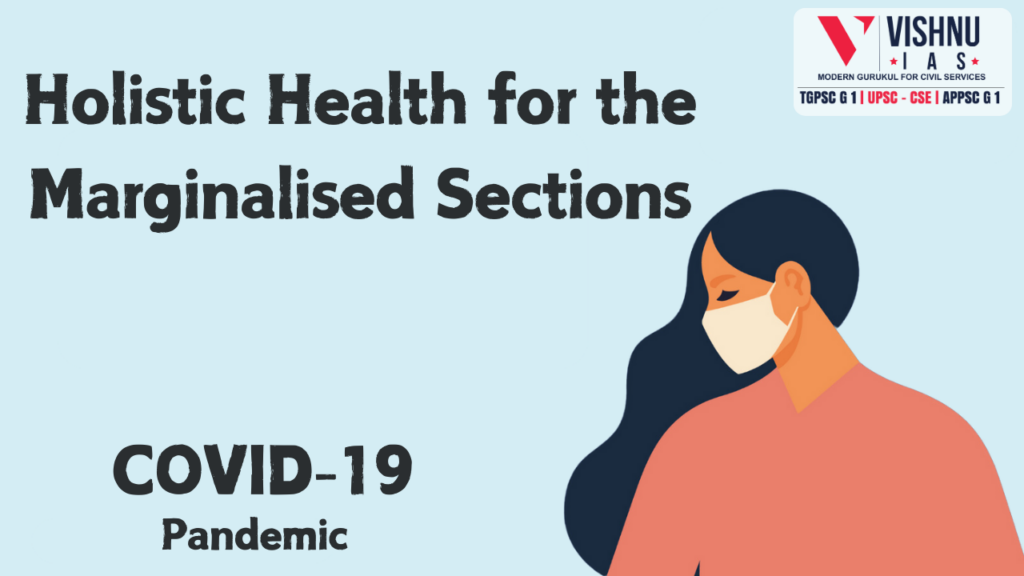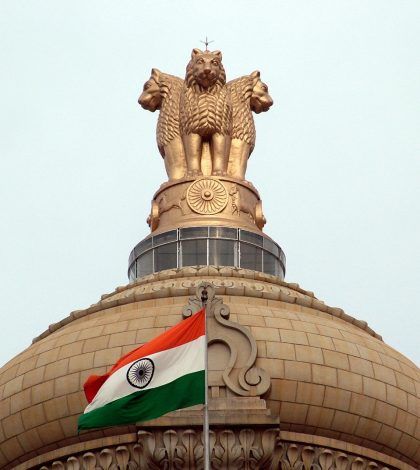Paradigms of holistic health and inequality
Critically examine existing paradigms of holistic health for the marginalised sections of society drawing inferences from COVID-19 pandemic.
Approach
- Introduction: add few introductory lines about the issue in brief
- Body: Critically examine existing paradigms of holistic health for the marginalised sections of society drawing inferences from COVID-19 pandemic.
- Conclusion: add contemporary relevance
INTRODUCTION
The COVID-19 pandemic has exposed and exacerbated existing health inequities, particularly affecting marginalized sections of society. This critical examination will explore the existing paradigms of holistic health for these groups, drawing inferences from the pandemic to highlight gaps and propose improvements.
BODY
Existing Paradigms of Holistic Health
Holistic health paradigms aim to address the physical, mental, social, and environmental determinants of health. Key paradigms include:
- Social Determinants of Health (SDH) Approach: This paradigm focuses on the conditions in which people are born, grow, live, work, and age. It emphasizes the role of socio-economic factors, such as income, education, and employment, in determining health outcomes.
- One Health Approach:This holistic paradigm recognizes the interconnectedness of human, animal, and environmental health. It advocates for integrated efforts across multiple sectors to achieve optimal health outcomes.
- Intersectionality Approach:This paradigm considers how various social identities (e.g., race, gender, class) intersect to influence health outcomes. It aims to address the compounded disadvantages faced by marginalized groups.
Impact of COVID-19 on Marginalized Groups
The COVID-19 pandemic has highlighted several critical issues within these paradigms:
- Exacerbation of Health Inequities: Marginalized groups, including low-income communities, racial minorities, and migrant workers, experienced higher rates of infection and mortality. Pre-existing conditions such as poor housing, limited access to healthcare, and precarious employment contributed to their vulnerability.
- Access to Healthcare:The pandemic strained healthcare systems, making it even more difficult for marginalized groups to access necessary services. This was particularly evident in rural and underserved urban areas.
- Mental Health:The pandemic’s social and economic disruptions significantly impacted mental health, with marginalized groups facing higher levels of stress, anxiety, and depression due to job losses, isolation, and inadequate support systems.
- Economic and Social Support:Lockdowns and economic downturns disproportionately affected marginalized communities, exacerbating poverty and food insecurity. The lack of robust social safety nets further deepened their plight.
Lessons and Recommendations
Drawing inferences from the pandemic, several lessons and recommendations emerge for improving holistic health paradigms for marginalized sections:
- Strengthening Healthcare Systems: There is a need to build resilient healthcare systems that can provide equitable access to all, especially during crises. This includes expanding healthcare infrastructure in underserved areas and ensuring affordable healthcare for all.
- Integrating Social Determinants of Health:Policies should address the broader social determinants of health, such as housing, education, and employment, to reduce health disparities. This requires a multi-sectoral approach involving collaboration between health, social, and economic sectors.
- Enhancing Mental Health Services:Mental health services should be integrated into primary healthcare and made accessible to marginalized groups. Community-based mental health programs can provide crucial support during and after crises.
- Adopting the One Health Approach:Recognizing the interconnectedness of human, animal, and environmental health can help prevent future pandemics. This approach requires coordinated efforts across sectors to address environmental degradation, zoonotic diseases, and climate change.
- Implementing Intersectional Policies:Policies should consider the intersecting identities and compounded disadvantages faced by marginalized groups. This involves targeted interventions that address the specific needs of these communities.
- Strengthening Social Safety Nets:Robust social safety nets, including unemployment benefits, food assistance, and housing support, are essential to protect marginalized groups during economic downturns and public health emergencies.
CONCLUSION
The COVID-19 pandemic has underscored the urgent need to re-evaluate and strengthen holistic health paradigms for marginalized sections of society. By addressing the social determinants of health, integrating mental health services, adopting the One Health approach, and implementing intersectional policies, we can build more resilient and equitable health systems that better serve all communities.
Anthropology Full Course at Vishnu IAS Academy
What does Course Offer?
- 4 Months (250+ Class Hours)
- Online (App + Web) / Offline / Hybrid Mode of Classes
- Live + Recorded Videos Access For 1 Year
- 2 Hour Live Class From Monday to Saturday (1.5 Hours for Class + ½ Hour for Doubt Solving)
- Foundation to Advanced Level of Teaching
- Simple and Integrated Content
- One Stop Solution Books
- Regular Value Added Content
- Current Affairs & Case Studies Modules
- Daily Answer Writing Practice
- Weekly Grand Tests On Sundays & Evaluation With Guidance and Topper Will be Rewarded
- 500+ Model Answers
- 9 AM – 9 PM Support System
- Free GS Current Affairs
- Free Interview Guidance for Anthropology


